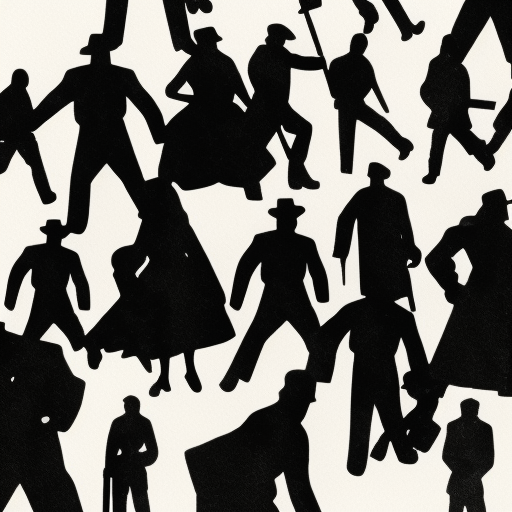The Civil Rights Movement
The Civil Rights Movement was a social and political movement in the United States that aimed to end racial segregation and discrimination against African Americans. It spanned from the late 1940s to the late 1960s and was characterized by nonviolent protests, civil disobedience, and grassroots activism.
Background: The movement was a response to the long history of racial inequality and oppression faced by African Americans in the United States. Despite the abolition of slavery after the Civil War, African Americans continued to face discrimination, segregation, and violence, particularly in the southern states.
Key Events:
1. Brown v. Board of Education (1954): This landmark Supreme Court case declared racial segregation in public schools unconstitutional, overturning the “separate but equal” doctrine established in Plessy v. Ferguson (1896). The ruling set the stage for desegregation efforts in schools across the country.
2. Montgomery Bus Boycott (1955-1956): Sparked by the arrest of Rosa Parks for refusing to give up her bus seat to a white passenger, the boycott was a year-long protest against segregated seating on public buses in Montgomery, Alabama. Led by Martin Luther King Jr., the boycott resulted in a Supreme Court ruling that declared segregated buses unconstitutional.
3. Sit-ins: In the early 1960s, African American students began organizing sit-ins at segregated lunch counters in Greensboro, North Carolina, and other cities across the South. These peaceful protests aimed to challenge segregation and demand equal treatment. The sit-ins inspired similar protests and led to the desegregation of many public facilities.
4. Freedom Rides (1961): Activists, both black and white, rode interstate buses through the South to challenge segregated bus terminals. They faced violence and arrests but drew national attention to the issue of segregation and the need for federal intervention to protect civil rights activists.
5. March on Washington (1963): One of the largest civil rights demonstrations in history, the March on Washington for Jobs and Freedom brought together over 200,000 people in support of civil rights legislation. It was at this event that Martin Luther King Jr. delivered his famous “I Have a Dream” speech, calling for an end to racism and equality for all.
6. Civil Rights Act of 1964: This landmark legislation prohibited discrimination based on race, color, religion, sex, or national origin. It outlawed segregation in public places, banned employment discrimination, and established the Equal Employment Opportunity Commission to enforce the law.
7. Voting Rights Act of 1965: This act aimed to overcome legal barriers that prevented African Americans from exercising their right to vote. It outlawed discriminatory voting practices, such as literacy tests and poll taxes, and authorized federal oversight of elections in areas with a history of voter suppression.
Impact:
The Civil Rights Movement had a profound impact on American society. It led to significant legal and social changes that dismantled segregation and discrimination. African Americans gained greater access to education, employment opportunities, and political representation. The movement also inspired other marginalized groups to fight for their rights, such as women, Native Americans, and the LGBTQ+ community.
However, the struggle for racial equality continues, as systemic racism and inequality persist in various forms. The Civil Rights Movement serves as a reminder of the power of collective action and the ongoing need to fight for justice and equality for all.












